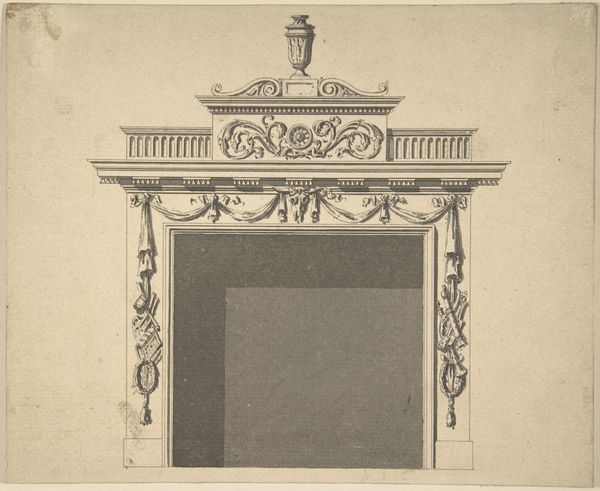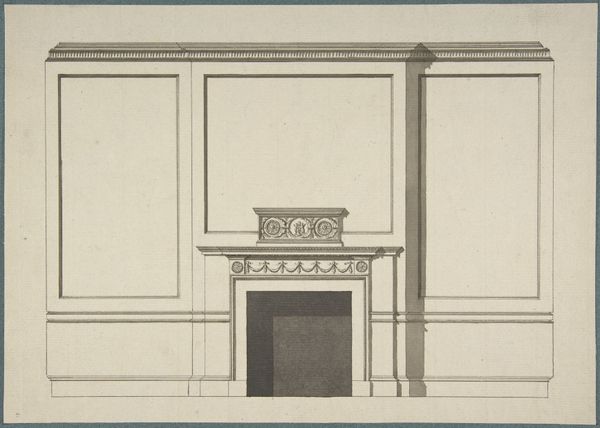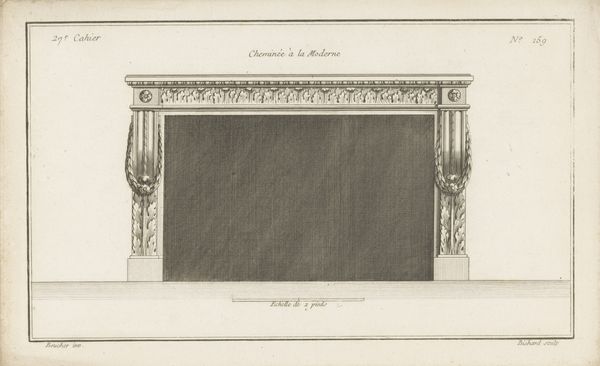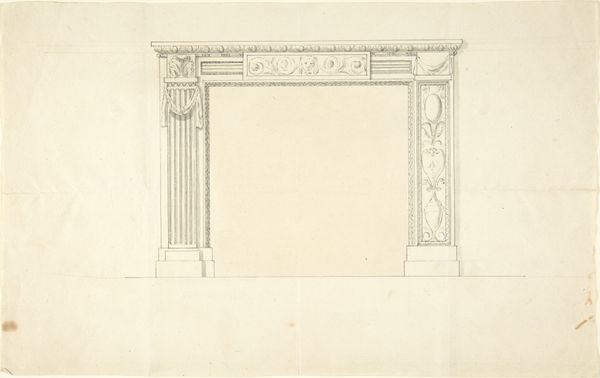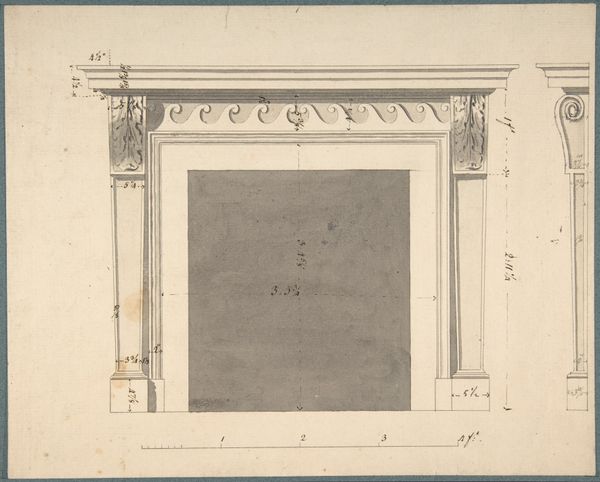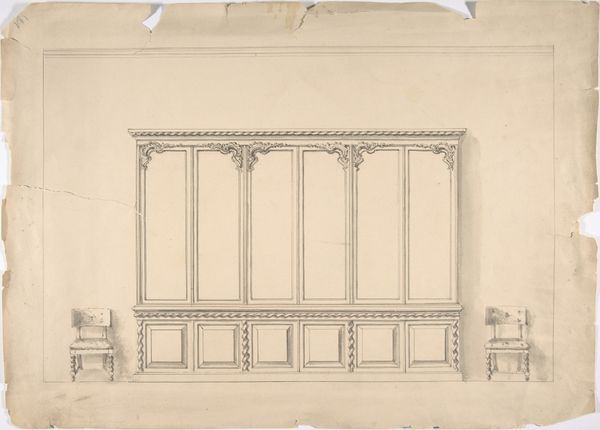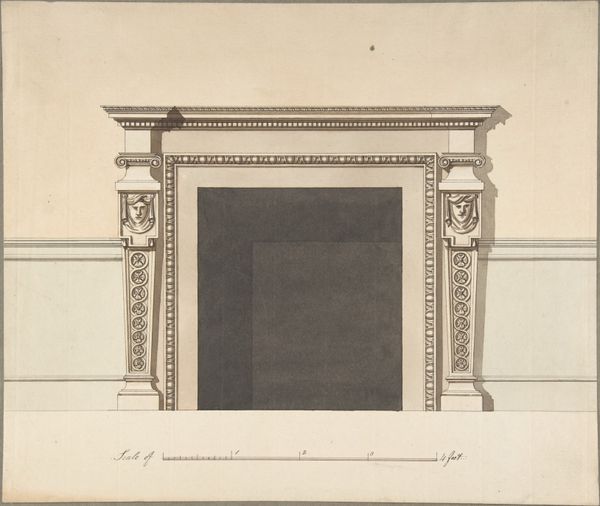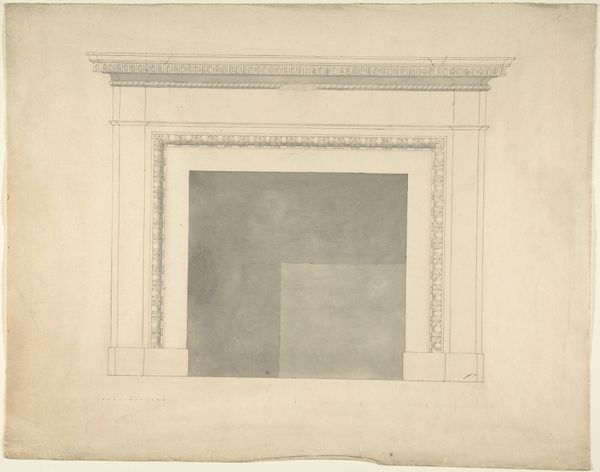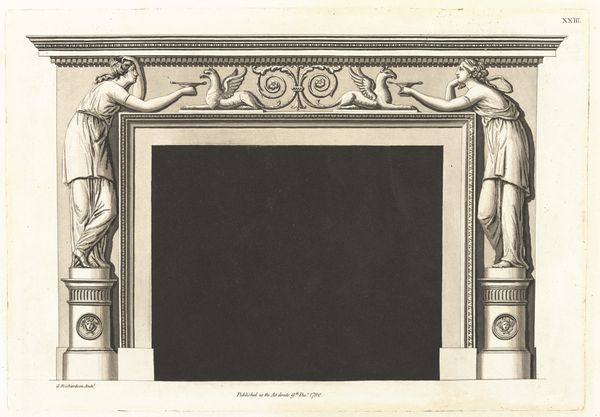
Design for a Fireplace with Frontal and Profile Views 1735 - 1788
0:00
0:00
drawing, print, paper, ink, architecture
#
drawing
#
neoclacissism
# print
#
paper
#
form
#
ink
#
line
#
architecture
Dimensions: sheet: 12 3/16 x 15 3/16 in. (30.9 x 38.5 cm)
Copyright: Public Domain
Editor: Here we have James Stuart's "Design for a Fireplace with Frontal and Profile Views," dating roughly from 1735 to 1788. It's a drawing, a print really, rendered in ink on paper. The crisp lines and symmetrical composition feel so formal and ordered. What should we consider when looking at this today? Curator: Well, beyond its aesthetic qualities, we need to contextualize this fireplace within the rise of Neoclassicism and its relationship to power. Think about the elite patrons who would have commissioned such a piece. These architectural designs, often brimming with references to antiquity, served as tangible assertions of cultural capital and ideological alignment. How do you see this drawing reinforcing social hierarchies? Editor: I see the inherent elitism, this aspiration for order maybe reinforces a particular power structure, but it's "just" a fireplace design...right? Curator: Consider the Enlightenment context. Stuart and his contemporaries were appropriating classical motifs, but often within a framework of colonialism and empire. Who benefitted from this aesthetic? How does its embrace of order contrast with the realities of societal inequality present at the time? Do the clean lines speak to you of imposed order? Editor: I see what you mean! Now, when I look, the symmetry, and even the details seem to assert an ideal of "civilization" that was often used to justify inequalities. I hadn't considered that so directly before. Curator: Precisely. These objects weren’t neutral. Engaging with them critically allows us to unpack the complex ways art and design have been complicit in upholding, and occasionally challenging, power dynamics. Editor: It is interesting to consider architecture, even in plan form, as something imbued with ideology. Thanks, that definitely reframes my understanding.
Comments
No comments
Be the first to comment and join the conversation on the ultimate creative platform.

